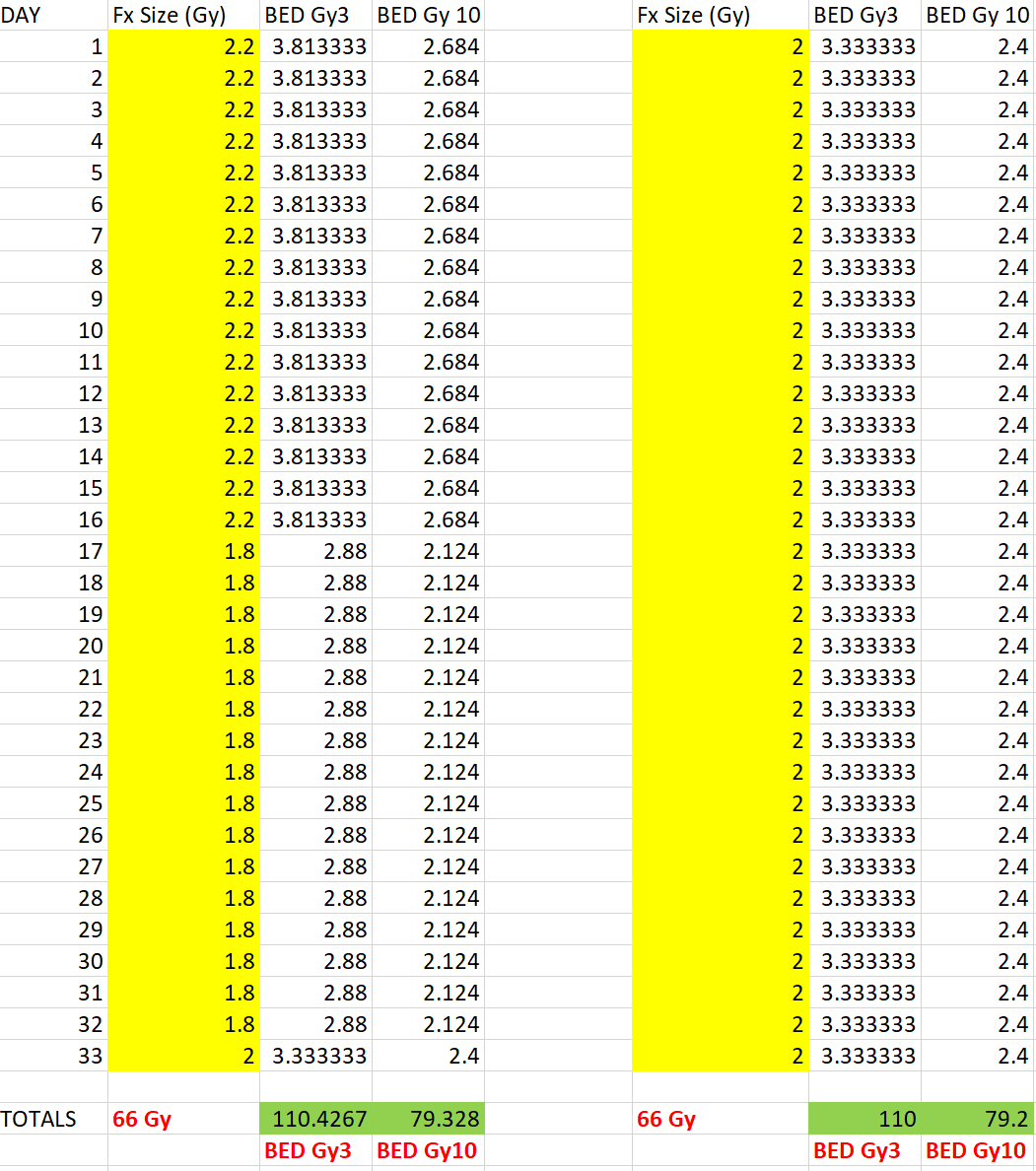- Joined
- Aug 13, 2006
- Messages
- 367
- Reaction score
- 341
- Points
- 4,781
- Medical Student
This is a fair point. usually I constrain my plexus max to way below the 74 at 4% if tumor is touching it. The reference to me just tells me that doses of 70 Gy may be reasonable if necessary. Though 70 Gy isn’t always necessary and there is probably increasing probability of plexopsthy with increasing volume over the 66-70 Gy. Simply constraining the global hot spot may not optimally spare the amount getting 66-70 Gy. And you may be able to constrain the V70 to under 4% or even go lower.Granted, but I might argue that a global plan hotspot of 74 Gy is less likely to lead to significant hotspot than 74 Gy to <4%. I also have concerns about relative volumetric constraints when the plexus is in general meant to look like this.
View attachment 341257View attachment 341258
Given the extent to which the plexus goes into the vertebral canal and out into the supraclavicular area/axilla, the vast majority of the plexus should already be outside of the low dose PTV, even in the over-contoured above PTV, somewhat negating the relevance of a <10% and <4% constraint, though you may draw yours differently (this is just the pic I got from the paper). Lastly, I question how much confidence we can have in the day-to-day location of a volume that measures an average of 8.5 cc (range 1.2-17.7 cc) (ten fold difference in size!?!) and spans >10 cm. I'd be more worried that the 78 Gy hotspot just outside the plexus on sim is in the plexus on a daily basis.



